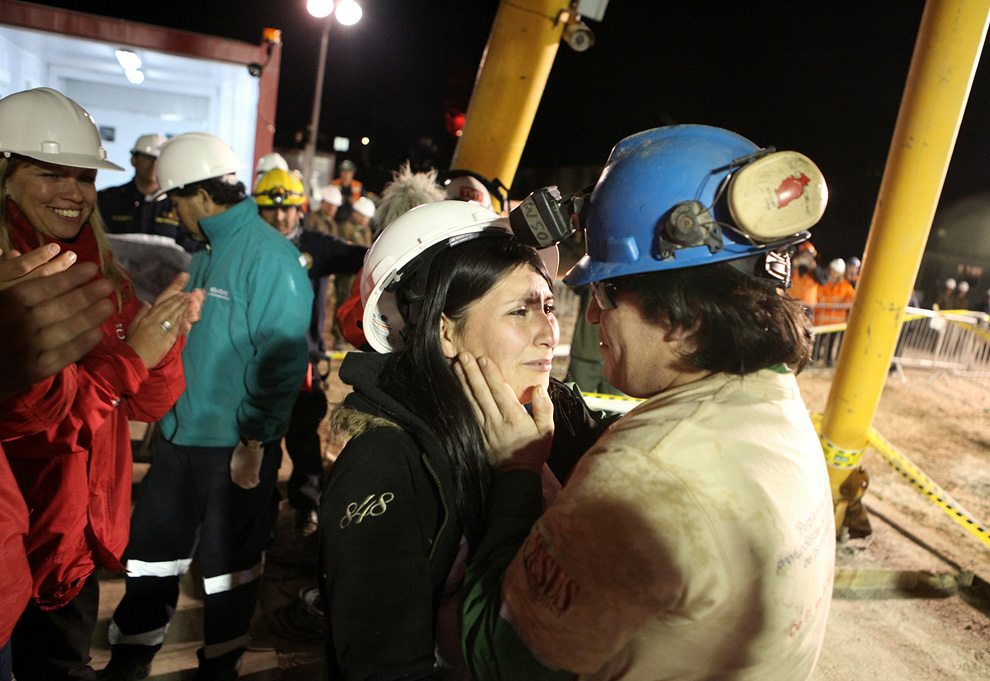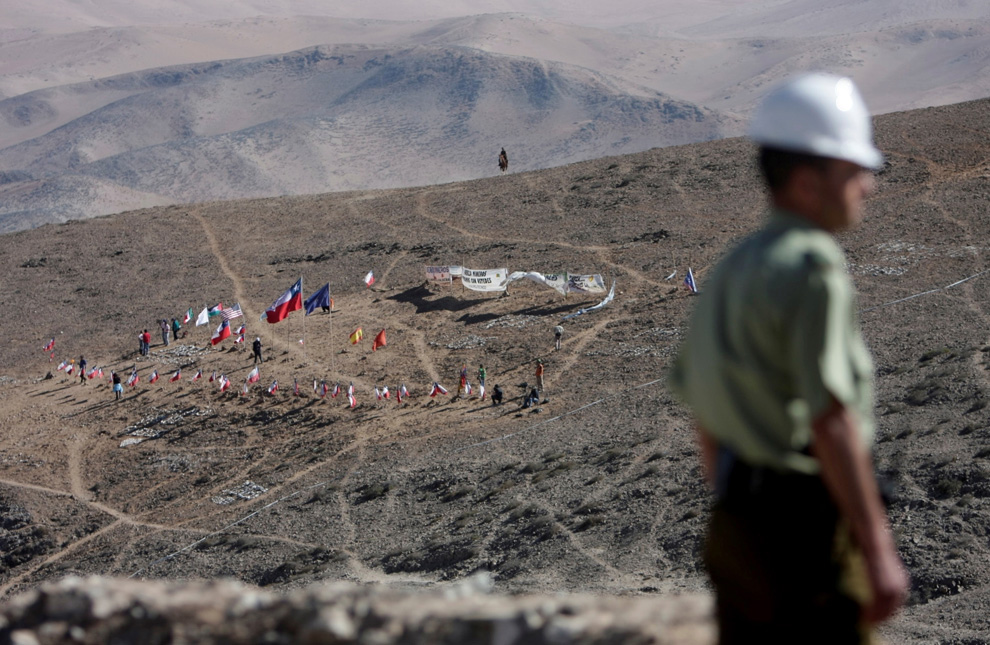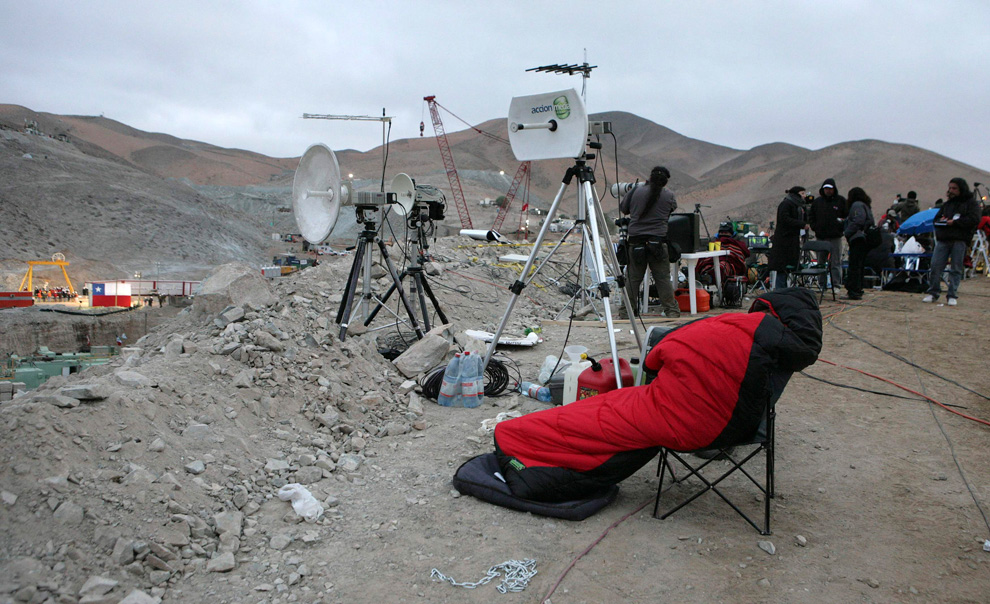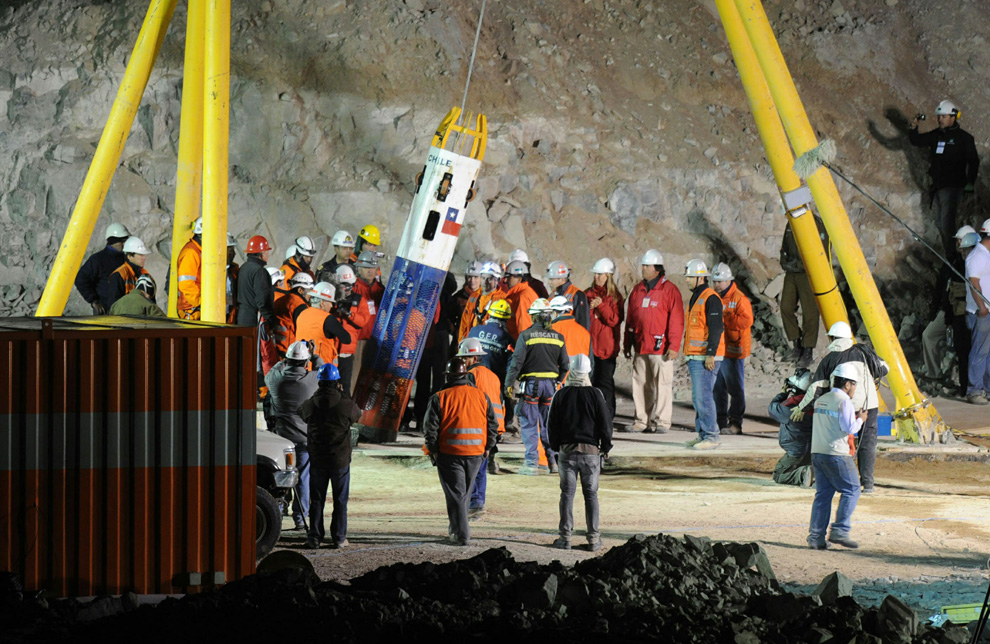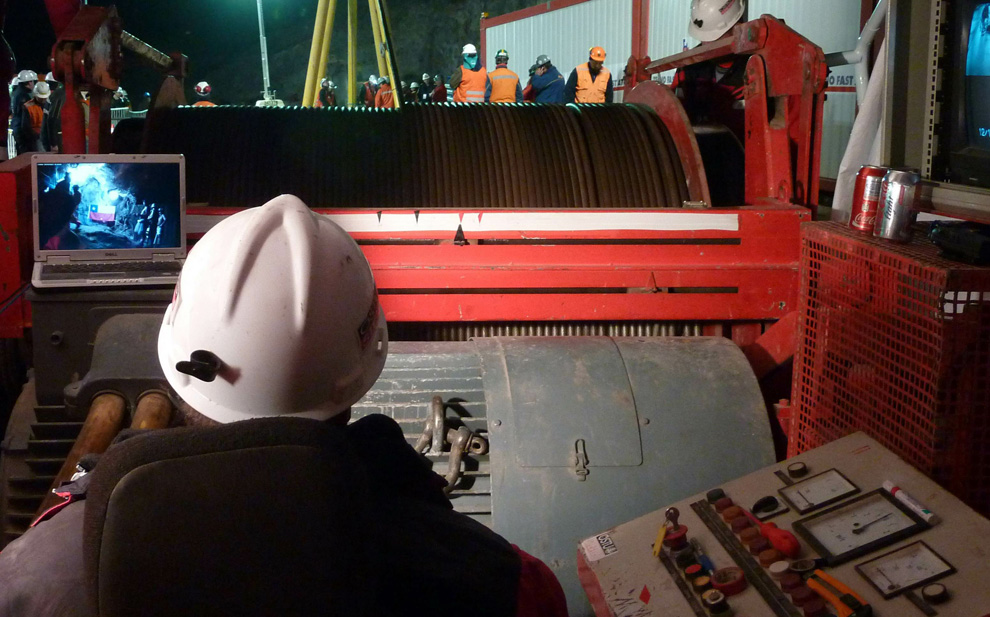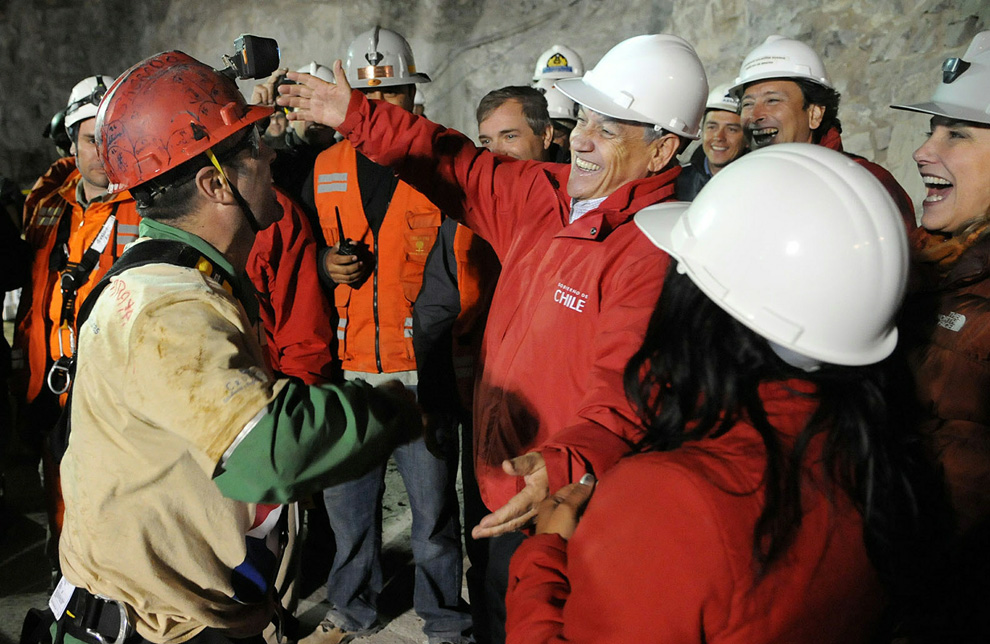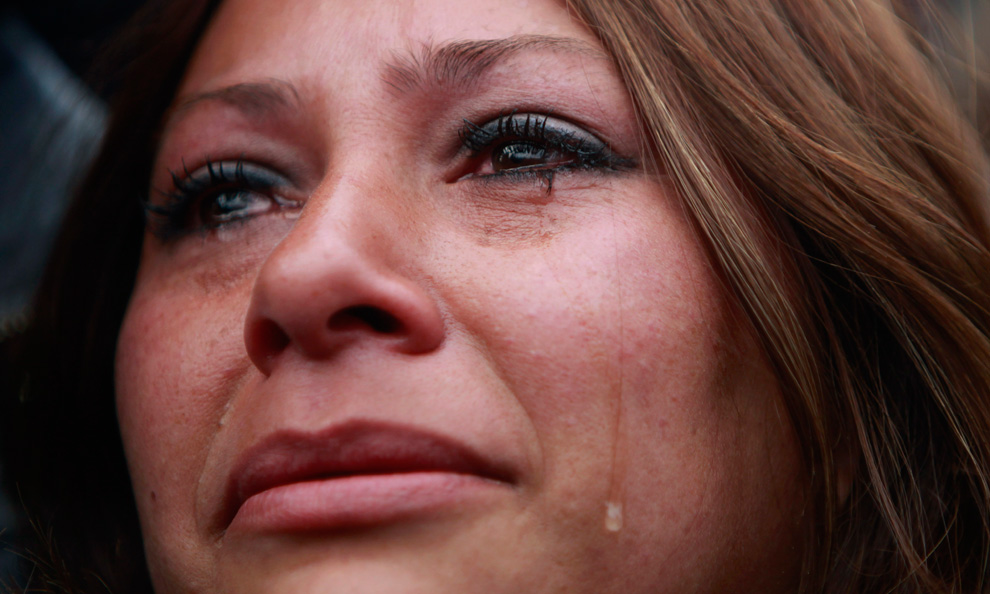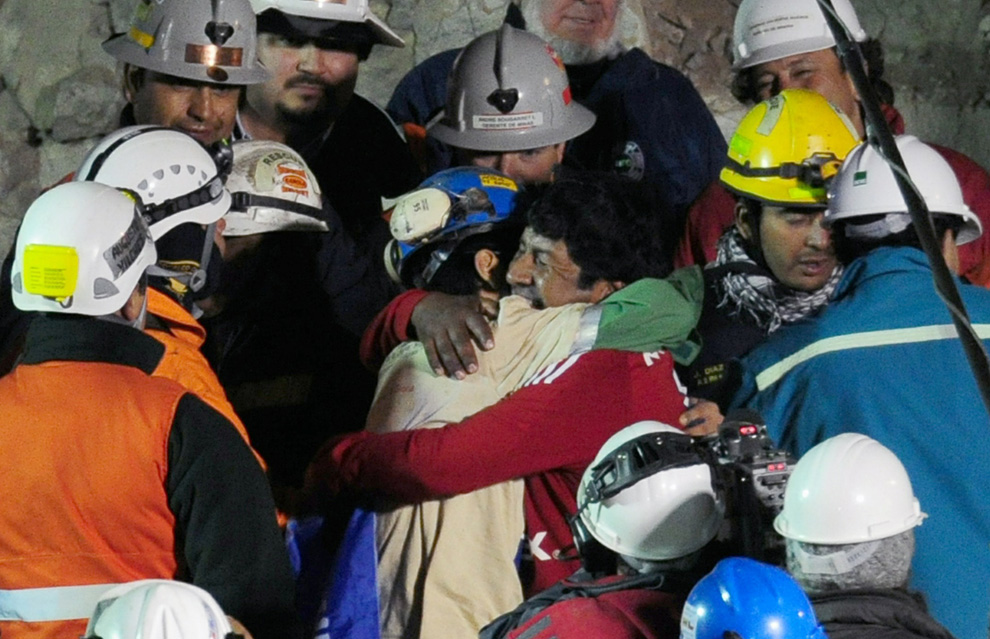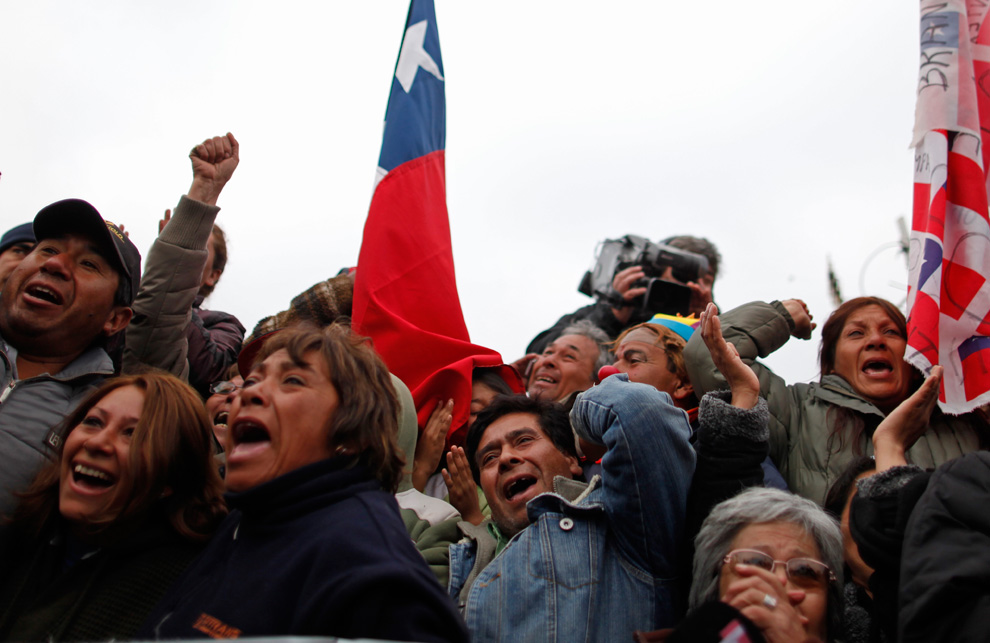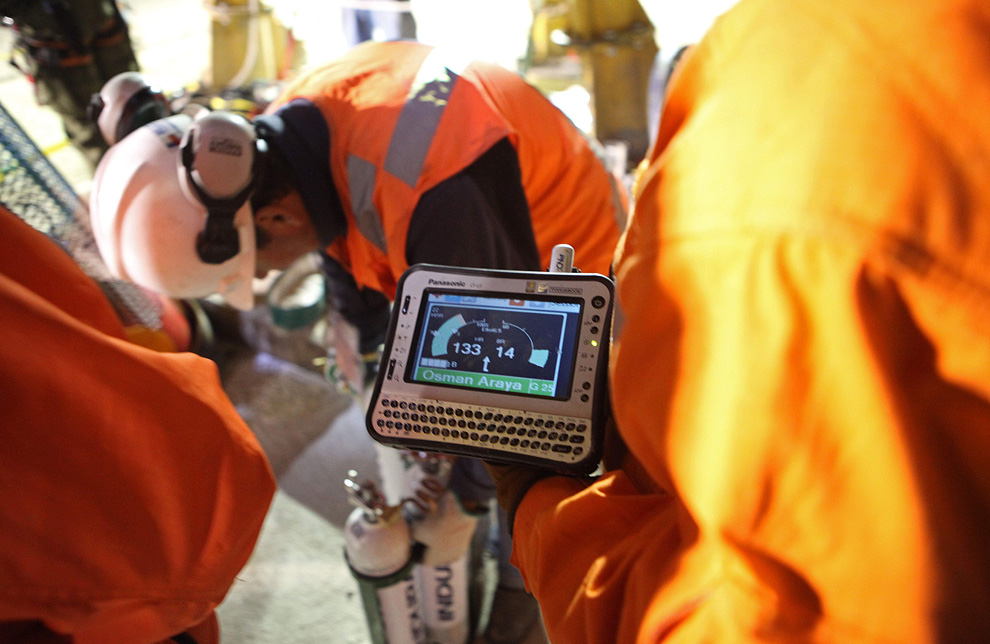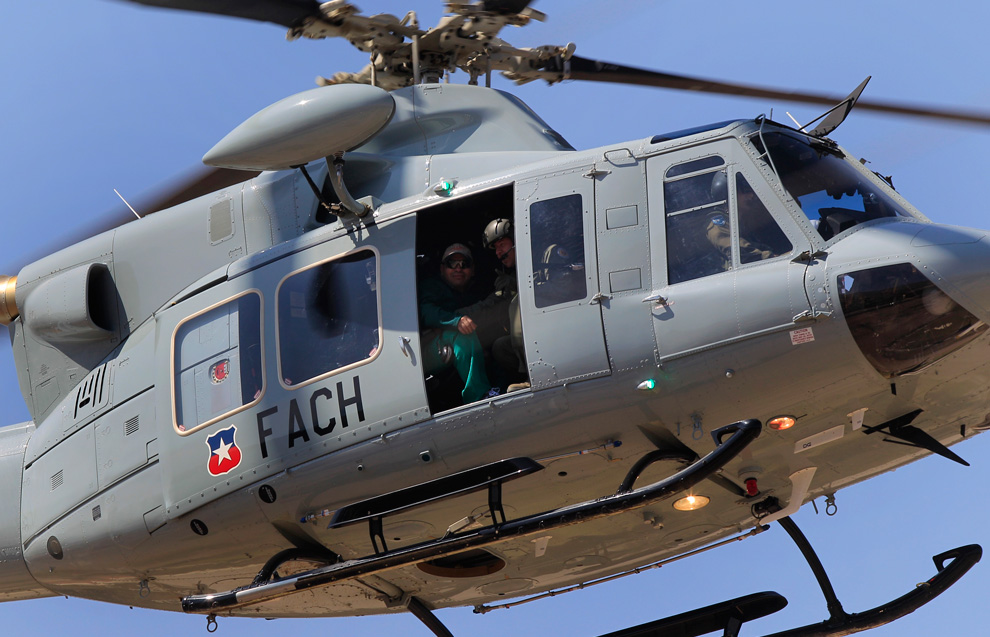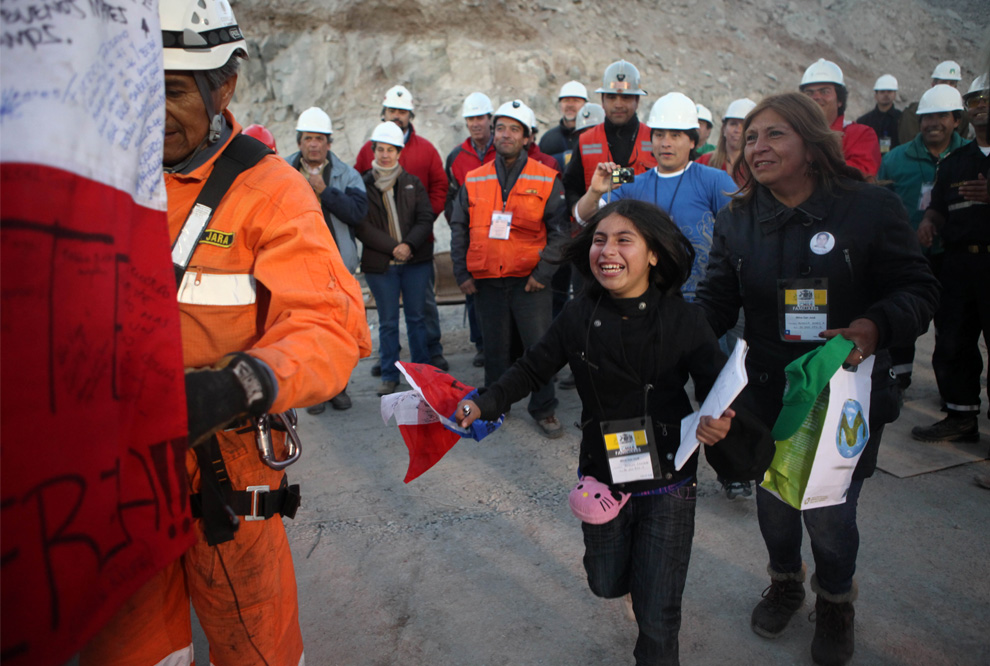Chile's trapped miners finally set to escape
Janet Ramirez (L), sister-in-law of trapped miner Mario Gomez, embraces her daughter Leslie Torres in front of a bonfire in Camp Esperanza (Hope) at the San Jose mine in Copiapo October 11, 2010. Credit: Reuters/Mariana Bazo
By Cesar Illiano and Terry Wade
COPIAPO, Chile | Tue Oct 12, 2010 10:49am EDT
COPIAPO, Chile (Reuters) - Chile's 33 trapped miners are set to travel nearly half a mile through solid rock in a shaft just wider than a man's shoulders on Tuesday night, as their two month ordeal after a cave-in draws to an end. The men have spent 68 days in the hot, humid bowels of a small gold and copper mine in Chile's far northern Atacama desert after an August 5 collapse, and now face a harrowingly claustrophobic journey to the surface in specially-made capsules. Wives, children, parents and friends are waiting on an arid, rocky hillside around 2,050 feet (625-meters) directly above them at a tent settlement dubbed "Camp Hope." An entire nation, still recovering from a devastating February earthquake, is ready to celebrate.
"Right now I'm calm, though still very anxious. I hope my nerves don't betray me when the rescue starts," said Jessica Salgado, whose husband Alex is trapped below, as the sun rose over the camp. "The first thing I'm going to do is hug him hard, tell him how much I love him, and how I've missed him all this time," she added. She said Mining Minister Laurence Golborne had told the men's relatives that rescuers could start to raise them from the depths a few hours before his Tuesday midnight (11 p.m. EDT on Tuesday night) estimate.
RELATIVES' VIGILS
Many miners' relatives staged vigils as the climax neared. Noemi Donoso, whose 43-year-old son-in-law Samuel Avalos is among the trapped, sat praying in a tent with four family members, their hands joined together to form a circle, singing hymns and chanting "hallelujah" and "glory to God." Her daughter had just left to have her hair done in a makeshift hairdressers in another of the camp's tents. "She went to the salon to get fixed up so she can look pretty when she receives him," Donoso said, as excited school children ran around the camp with face paint on.
Rescuers on Monday successfully tested a capsule, dubbed "Phoenix" after the mythical bird that rose from the ashes, after they partially lined the narrow escape duct with metal tubes to avoid any last-minute disasters. They originally found the men, miraculously all alive, 17 days after the collapse with a bore hole the width of grapefruit, which then became an umbilical cord used to pass hydration gels, water and food to keep them alive during one of the world's most ambitious rescue operations.
The men have set a world record for the length of time workers have survived underground after a mining accident, and have been doing exercises to keep their weight down for their ascent. It has been an agonizing wait. "We are doing better now. We are almost there," said Gaston Henriquez, who has camped out near the mine entrance since the beginning of the ordeal, waiting for his brother Jose to escape. Once the evacuations start, it will take 48 hours to extract the men. Four rescuers will be lowered to help the miners prepare to return to the surface.
Each man's journey to the surface should take about 12 to 15 minutes. The miners will have their eyes closed and will immediately be given dark glasses to avoid damaging their eyesight after spending so long in a dimly lit tunnel. President Sebastian Pinera, who ordered a revamp of mine safety regulations in the wake of the accident, plans to visit the mine on Tuesday. One of the 33 miners is a Bolivian national and Bolivian President Evo Morales has vowed to visit the mine for his rescue.
(Additional reporting by Antonio de la Jara, Juana Casas and Brad Haynes in Santiago and Santiago Silva in Quito; Writing by Simon Gardner; Editing by Vicki Allen)





